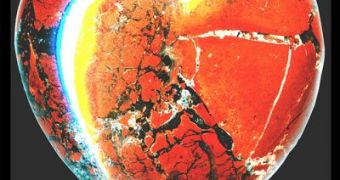After carrying out a new study on preventing major heart problems, cardiac imaging researchers at Cedars-Sinai Heart Institute advise physicians to consider fatty deposits around the heart when evaluating patients' heart condition.
Normally, measuring abdominal fat is enough to assess for heart problems but according to this new research, measuring fat around the heart is an even better predictor, and it can be done with a noninvasive CT scan.
The article's first author and a leading authority on cardiac imaging is Daniel S. Berman, MD, chief of cardiac imaging at the Cedars-Sinai Heart Institute and Cedars-Sinai's S. Mark Taper Foundation Imaging Center.
Under his direction, Cedars-Sinai finished the largest randomized trial of coronary artery calcium CT scanning, on 2,137 patients over the last four years.
This technology is used to identify plaque deposits in heart arteries by identifying bits of calcium, that enter the plaque's composition.
Also, a coronary artery CT scan can be used to assess fat around the heart and coronary arteries, and having these data gives a more precise evaluation of a patient's risk for major heart problems.
This medical advice, appeared in an editorial published in the Journal of the American College of Cardiology: Cardiovascular Imaging, and it was reinforced by another article in the journal, in which the scientists gave new evidence that related abdominal fat to instability of coronary arterial plaques.
In other words, people with too much abdominal fat had higher risks of plaque buildup and heart problems, with those having a plaque vulnerable to ruptures more threatened than others.
The fat surrounding the heart also contributed to the development of MACE (major adverse cardiac events) like nonfatal heart attack, cardiac-related death, surgery to bypass blocked heart arteries or repeated angioplasties to reopen blocked arteries.
While studying coronary artery calcium CT scanning, Cedars-Sinai researchers concluded that patients without symptoms of heart disease that experienced a MACE, had even more fat around the heart that control subjects without any events.
After all these studies, the main idea, proven scientifically, is that measuring fat around the heart is the noninvasive procedure that gives the most accurate results on risks of having a major cardiac event.

 14 DAY TRIAL //
14 DAY TRIAL //